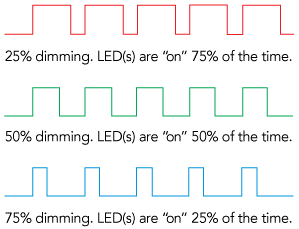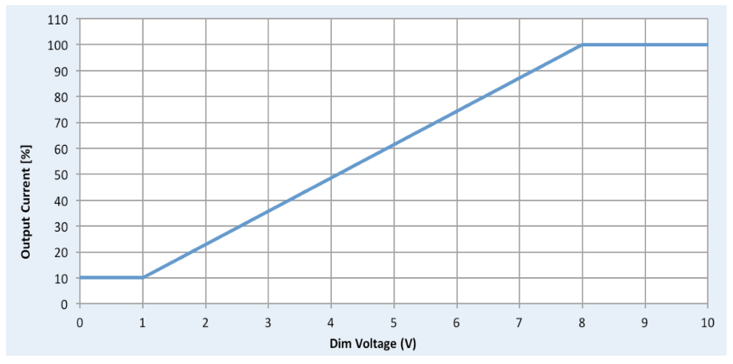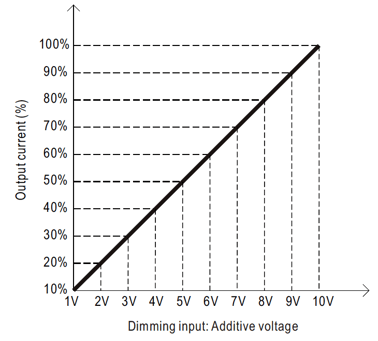How Bright Is Your Dimming Knowledge?
Delivering proper light intensities at each growth stage is critical for success. You can not veg plants at the same level as mid-flower. It simply won't work. Before dimmable light became available, the only way to control light intensities was to raise and lower lights. Changing light heights was manageable when grow rooms only had a few to dozens of lights. Flash forward to today, with grow facilities having hundreds to thousands of lights, adjusting light heights is impossible.
One of this article's most important takeaways is getting a light meter. There is no reason to guess the light intensities your plants are receiving. With the ability to dim, you can accurately control the light intensities at each growth stage, but you need a meter to do it properly.
Although many meters are expensive, newer, less costly units are decently accurate. How you hold it, and even the color of your clothes, can affect the reading, so be consistent in your technique.
Types of Dimming
There are dozens of dimming protocols that can be used with lighting. This blog post will focus on the ones commonly found in horticultural lighting designs.
0-10v dimming is the most common in horticulture. As the name implies, when zero volts are applied to the dimming circuit, the light will be at its lowest output. At ten volts, the light will be at full brightness.
0-10v dimming does have its limitations. Being an analog control signal, it's limited to the number of fixtures that a single unit can control. There is a minimum threshold of current needed to activate the dimming function. This limits the number of fixtures per 0-10v dimming controller. Signal boosters are available that can extend the range, but this is not a preferred practice.
Lighting manufacturers can help with how many fixtures can be dimmed per controller. If using a 3rd party dimmer, the number of fixtures it can control may vary. If an LED grow light has two drivers, it might draw double the dimming current, thus limiting the amount of lights that it can control.
Not all drivers are created equal. At zero volts, some drivers still power the lights at a few percent of full brightness. Others are designed to be turned completely off at zero volts. This is called "dim-to-off".
Turning fixtures off via contacts/timers is highly recommended instead of relying on dim-to-off. Electrical/wiring issues can inadvertently keep/turn on fixtures when they should be off. Turning lights on during the night phase can break the flowering cycle, potentially damaging the crop. Additionally, if there were a lightning strike, the panel would take the hit and not the drivers.
There are other analog dimming protocols. 0-8v, 0-12v, and other dimming protocols are used in our industry. Even with an adaptor, these protocols might not give full performance when using an industry-standard 0-10v dimmer.
Pulse-Width Management (PWM) is another dimming protocol available in horticultural fixtures. It dims the fixture's output by pulsing the current to the LEDs at a high rate. For example, if the fixture is on 50% of the time and off 50% of the time, it will output half of its total output. On/off cycling must happen at 100 cycles per second (100 Hz) or greater to avoid flickering to humans.
There are considerations with PWM. It requires a much higher initial voltage (3.8v vs. ~0.6v) to turn the light on to its lowest output. Typically it requires more costly components and controllers. Additionally, different modulation methods exist, so the components must be selected together to operate correctly.

Digital Addressable Lighting Interface (DALI)
DALI is a relatively new dimming protocol just starting to enter horticultural lighting. It is a digital network control system that consists of a bus that connects the controller to the fixtures and sensors. DALI is similar to a computer network in that each light has its own "address" that can be controlled individually. It established two-way communication between the controller and the grow fixture.
DALI can dim fixtures individually, which can lead to better uniformity. Of course, this requires the room to be correctly installed and configured. The typical hotspot in the center of the grow room can be reduced, making growing easier.
Currently, there are temperature sensors for DALI installations. With a bit of programming, lights can be dimmed or selectively turned off if high heat conditions are detected. If an AC unit fails, DALI could save your crop.
DALi is not sensitive to polarity on its control wires making it very simple to install. You don't need to maintain positive and negative connections in any specific order. Just hook it up and start dimming.

(This diagram was taken from uPowerTek's site)
Other Dimming Protocols
Other dimming protocols are emerging to control light intensities. Bluetooth and Zigbee are finding their way into grow facilities. A few manufacturers are developing their proprietary lighting controls. Dimming is an area that is advancing at a quick pace.
Types of Connectors
The physical type of connections on both the controller and fixtures is something to consider. The best option is to use bare leads directly installed into the controller. If this connection is interrupted, all the connected fixtures will reach the maximum output. This could ruin a crop if not caught quickly.
The connection to individual fixtures should be with twist lock-type connectors. Knocking one of these out by accident isn't easy. Also, they usually have high IP ratings, which is a plus.
Many lighting manufacturers rely on RJ11/14 connectors for fixtures and controllers. These can be problematic if they are not correctly installed and can be prone to getting dislodged. Additionally, many of them have lower IP ratings.
Dimming Curves Explained
A dimming curve shows the light response to the dimming voltage signal. Modern LED grow lights use linear dimming curves, meaning the light intensity is directly proportional to the dimming voltage.
Below are two examples of dimming curves. The one on the left has a 1-10v dimming curve, and the one on the right has a 1-8v curve. If you install these on the same dimmer, you will get different results from each fixture. If the dimming signal were at 8 volts, the 1-10v would be at 80% brightness, and the 1-8v would be at 100% brightness. Therefore, you would need two separate dimmers to control the room accurately. It would complicate the installation and the operations of the room.

1-10v Dimming

1-8v Dimming
Tags:
Oct 13, 2023 7:00:00 PM


Comments